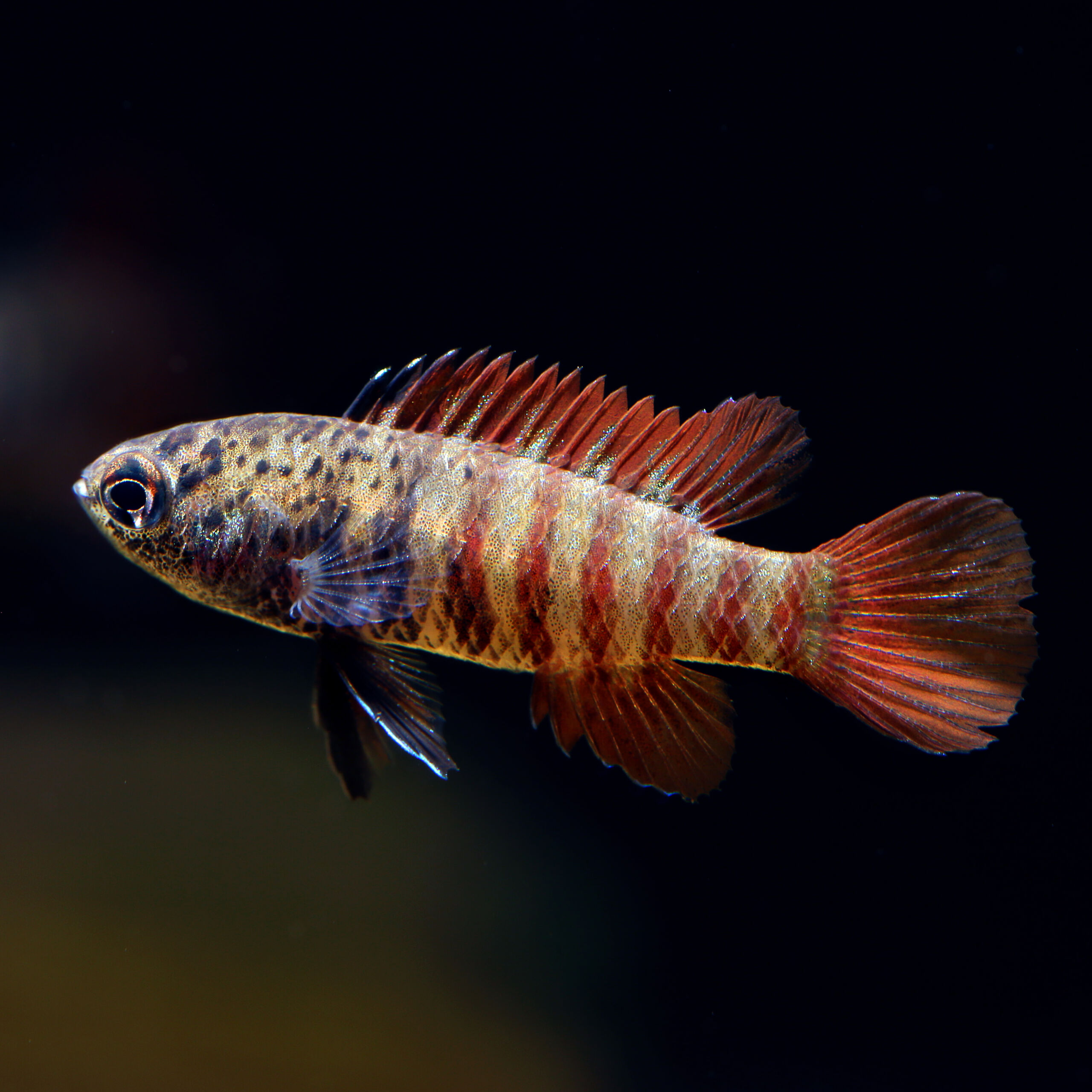Black Tiger Badis
Dario tigris
The Black Tiger Badis, which originates from Southeast Asia, grows to only about 3-4cm in size and is a real eye-catcher due to its magnificent coloration.
- magnificent, high-contrast coloration
- black stripe and dot pattern on the head
- stays mainly close to the ground
1 in stock
 Lieferung in wenigen Werktagen
Lieferung in wenigen Werktagen
 Kostenloser Versand ab 60€
Kostenloser Versand ab 60€





Important data
Product description & details
The Black Tiger Badis originates from Southeast Asia, where it is widespread in India, Myanmar and Thailand. Its natural habitat consists of long and slow flowing waters.
Care in the aquarium
As a facility, stones, woods, dense planting and other hiding places are recommended so that the Black Tiger Badis has a sense of security and can retreat if necessary. Plants also help the Dario tigris to mark out their small territories, which are mainly defended during the spawning season. This otherwise very peaceful fish should be kept in groups and can also be socialized with other small and peaceful fish. Dwarf shrimp should not be a problem either, as long as the shrimp offspring find enough hiding places.
Feeding
Dario tigris is difficult or impossible to get used to commercial fish food and should therefore be fed with small live and frozen food. Artemia nauplii, daphnia and copepods, for example, are well suited for this purpose.
Sexual characteristics and breeding
Dominant males of the Black Tiger Badis show up in intense red stripes, which go vertically along the back of the body side and are replaced at the front end by black stripes and dots and a cream-colored basic coloration. The fins are also red in color. Blue shimmering areas on the fins are clearly visible in some animals, but not nearly as pronounced as in the relative Dario dario. Females and submissive males, on the other hand, are silvery and brown in color and the stripes are at most indicated. In the species tank, the breeding of the Black Tiger Badis is usually quite possible, as long as the water parameters are right and the aquarium is well established. After a successful courtship ceremony, the male and female entwine each other and the female spawns the eggs freely on mosses and fine-feathered plants. The small Badis does not take care of the brood, but the egg-laying site in the male’s territory is defended by him.
At the latest after the hatching of the young animals, they should be transferred to a rearing tank or the parents should be removed from it, as they pursue the young animals. The young Dario tigris reared with very fine live food such as rotifers, copepods or newly hatched Artemia nauplii.
Note on gender choice at Dario tigris:
If possible, the delivery is done in pairs. However, Dario tigris females are hard to come by. Younger males often disguise themselves as females in the group to avoid aggression from the more dominant animals. They lose their color and attract as little attention as possible. That is why it is very difficult to determine safe females.
We choose the sexes to the best of our knowledge and belief when catching them, but we cannot guarantee whether it is actually a female or not. Therefore, we ask for your understanding that we cannot accept any complaints regarding the sex of the animals.



